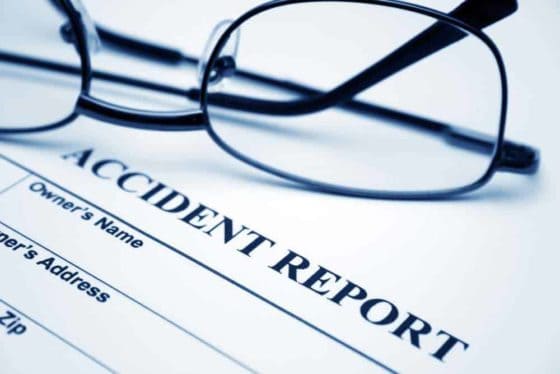In Illinois, state police and law enforcement officials are legally required to file an Illinois Traffic Crash Report whenever a vehicle is involved in a car accident—including collisions with other motor vehicles, bicyclists, and pedestrians.
It is important to note that while Illinois car accident reports are not typically admissible evidence in court, they still play a significant role as insurance companies rely on this document to determine the value of your claim. Also, the responding police officer may be asked to testify in court at a much later time, and he or she will likely rely on the information found in their report. As such, it is important that you familiarize yourself with the contents of this document.
Page 1 – Essential Information
The first portion of the Illinois Car Accident Report contains essential information such as the date and time of the accident, where the accident took place, and the agency investigating the accident. The crash report records details on the drivers and vehicles involved in the accident, including the registered owner’s name and address, the driver’s license number, insurance information, as well as the vehicle’s model, make, and year. It also makes note of whether there was vehicle damage, whether the vehicle had to be towed, whether injuries were reported, and whether any victims were taken to the hospital by EMS workers. Generally, the police describe vehicles as Unit 1 and Unit 2, where Unit 1 is the vehicle the authorities believe to be at fault for the collision. Of course, this may not always be the case as the officer does not usually witness the accident itself.
The Illinois Traffic Crash Report also records information of up to five passengers or witnesses to the accident, including their contact details, the unit number of the vehicle they were traveling in, and their seating position inside the vehicle. An additional page will be appended if there are more than five passengers or witnesses to the accident.
The bottom portion of the page also contains information that is crucial for proving fault in a personal injury case. These include details on the primary and secondary cause of the crash, any citations or arrests, the owner of any property damaged in the accident, and the posted speed limit. The police officer must also affix their identification number, supervisor’s name, and signature on this page.
Page 2 – Pictorial Narrative of the Accident
The second page of the Illinois Traffic Crash Report contains a pictorial narrative of the accident. The responding officer must create a diagram that shows the direction the vehicles were initially traveling, where the accident occurred, and where the involved vehicles were after the accident. The narrative must also make note of any intersections, traffic signals, and skid marks.
The law enforcement official must then provide a written narrative of the accident detailing how and why the officer believed the accident happened. In this section, the officer may also include any observations he or she made at the scene, and any notes from interviews with the drivers and witnesses. The box located on the right side of the report’s second page is only used when a commercial vehicle is involved in the accident.
Consult A Lawyer Today
If you or someone you know has been involved in a car accident, seek advice from an experienced legal professional as soon as possible. Contact a qualified attorney from Willens & Baez can help ensure your rights are protected and that you receive fair compensation.












